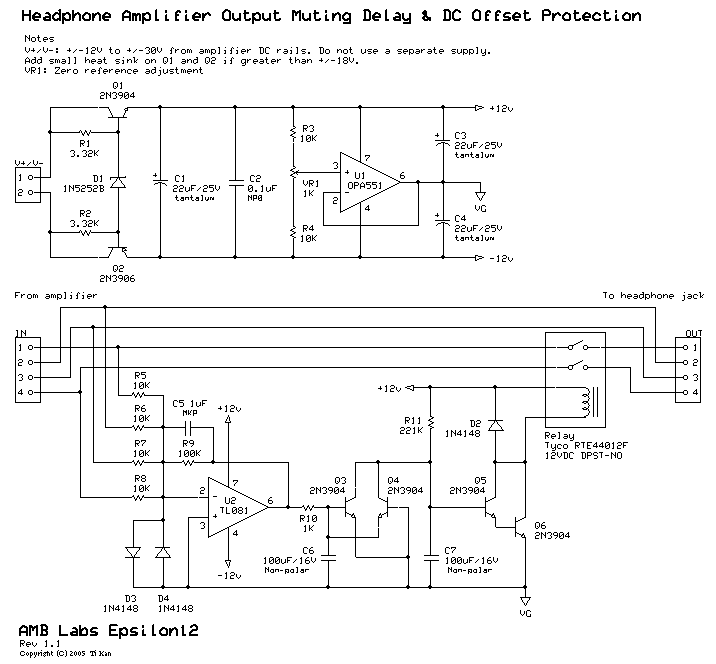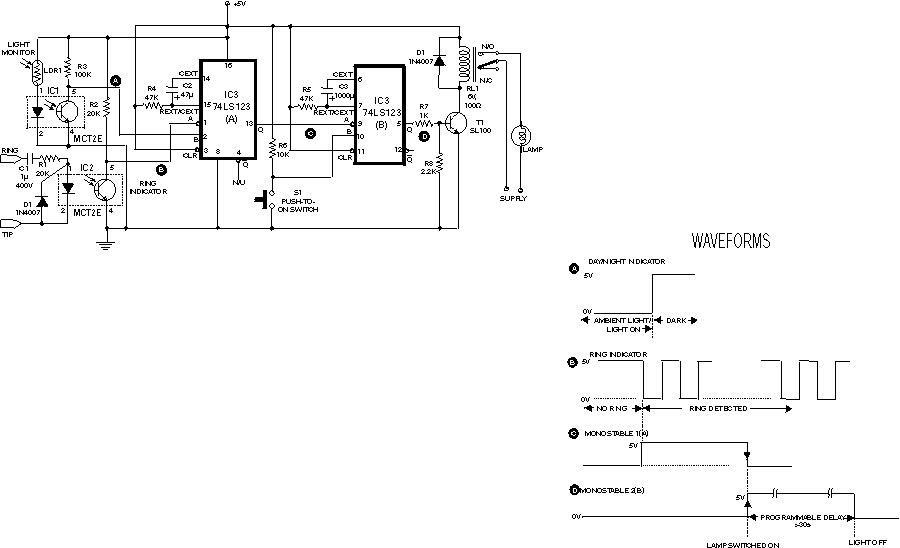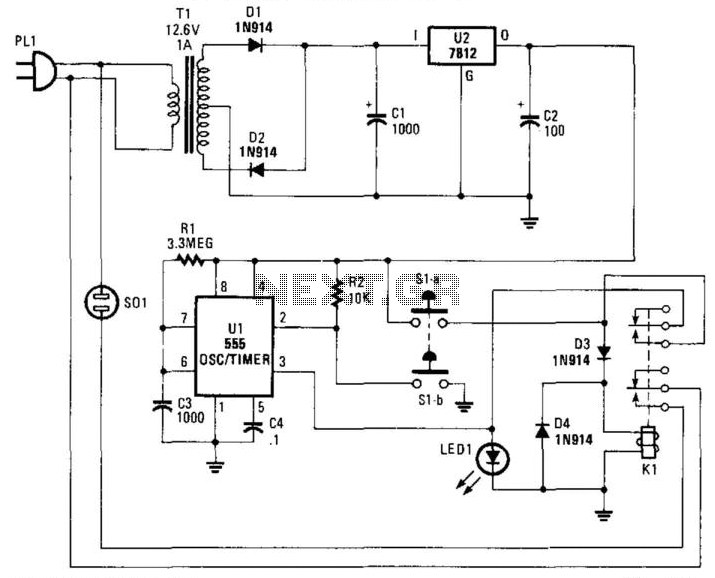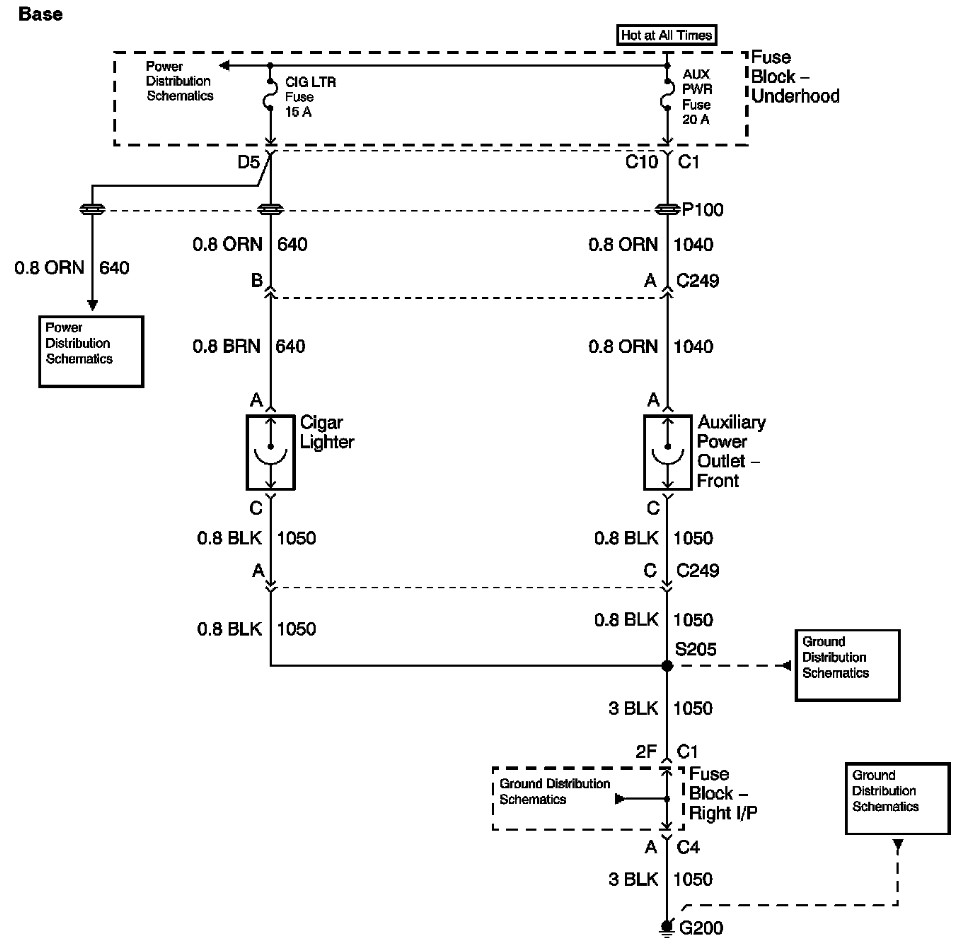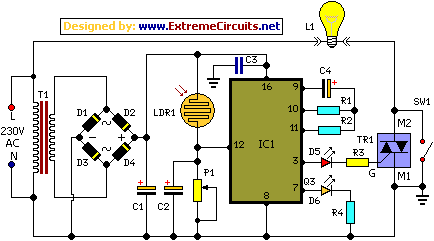
Auto OFF Light
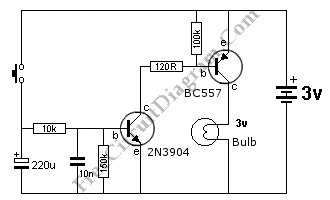
This is an Auto OFF Light circuit. After the switch is pressed, the bulb remains illuminated for a few seconds. To increase the ON time, a 10k resistor should be used.
The Auto OFF Light circuit is designed to provide a temporary illumination of a bulb after a switch is activated. The operation of the circuit relies on a timing mechanism that allows the bulb to remain lit for a predetermined duration, enhancing user convenience in various applications, such as in hallways or bathrooms.
The core components of this circuit typically include a switch, a resistor (10kΩ), a capacitor, and a light bulb. When the switch is pressed, it initiates the charging of the capacitor through the resistor. The time the bulb stays lit is primarily determined by the RC time constant, which is a product of the resistance (R) and capacitance (C) in the circuit.
To increase the ON time, the value of the resistor can be adjusted. A higher resistance, such as 10kΩ, will result in a longer charging time for the capacitor, thus extending the duration the bulb remains illuminated. The formula for the time constant (τ) is given by τ = R × C, where τ is the time in seconds, R is the resistance in ohms, and C is the capacitance in farads.
The circuit may also include a diode to prevent back EMF from damaging components when the bulb is turned off. The light bulb can be of various types, including incandescent or LED, depending on the desired brightness and energy efficiency.
In summary, the Auto OFF Light circuit is a practical design that provides temporary lighting, with the ability to adjust the duration of illumination through component selection, making it suitable for a variety of lighting applications.This is Auto OFF Light circuit. After the switch is pressed, the bulb is kept illuminated for a few seconds. To increase the ON time, The 10k should be. 🔗 External reference
The Auto OFF Light circuit is designed to provide a temporary illumination of a bulb after a switch is activated. The operation of the circuit relies on a timing mechanism that allows the bulb to remain lit for a predetermined duration, enhancing user convenience in various applications, such as in hallways or bathrooms.
The core components of this circuit typically include a switch, a resistor (10kΩ), a capacitor, and a light bulb. When the switch is pressed, it initiates the charging of the capacitor through the resistor. The time the bulb stays lit is primarily determined by the RC time constant, which is a product of the resistance (R) and capacitance (C) in the circuit.
To increase the ON time, the value of the resistor can be adjusted. A higher resistance, such as 10kΩ, will result in a longer charging time for the capacitor, thus extending the duration the bulb remains illuminated. The formula for the time constant (τ) is given by τ = R × C, where τ is the time in seconds, R is the resistance in ohms, and C is the capacitance in farads.
The circuit may also include a diode to prevent back EMF from damaging components when the bulb is turned off. The light bulb can be of various types, including incandescent or LED, depending on the desired brightness and energy efficiency.
In summary, the Auto OFF Light circuit is a practical design that provides temporary lighting, with the ability to adjust the duration of illumination through component selection, making it suitable for a variety of lighting applications.This is Auto OFF Light circuit. After the switch is pressed, the bulb is kept illuminated for a few seconds. To increase the ON time, The 10k should be. 🔗 External reference
